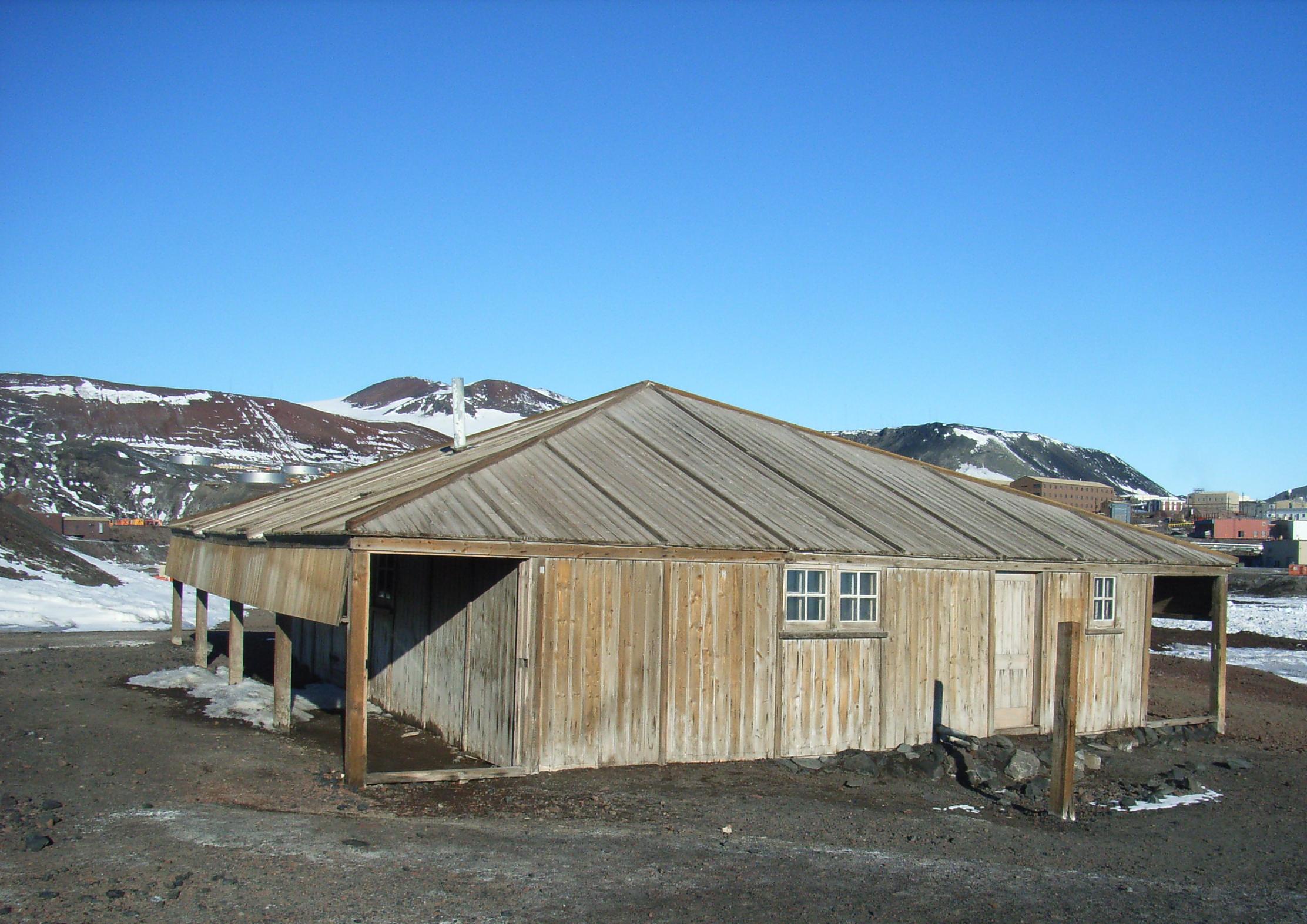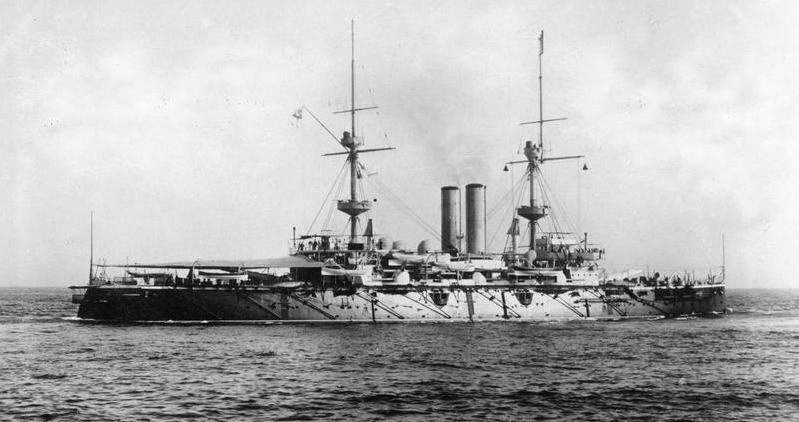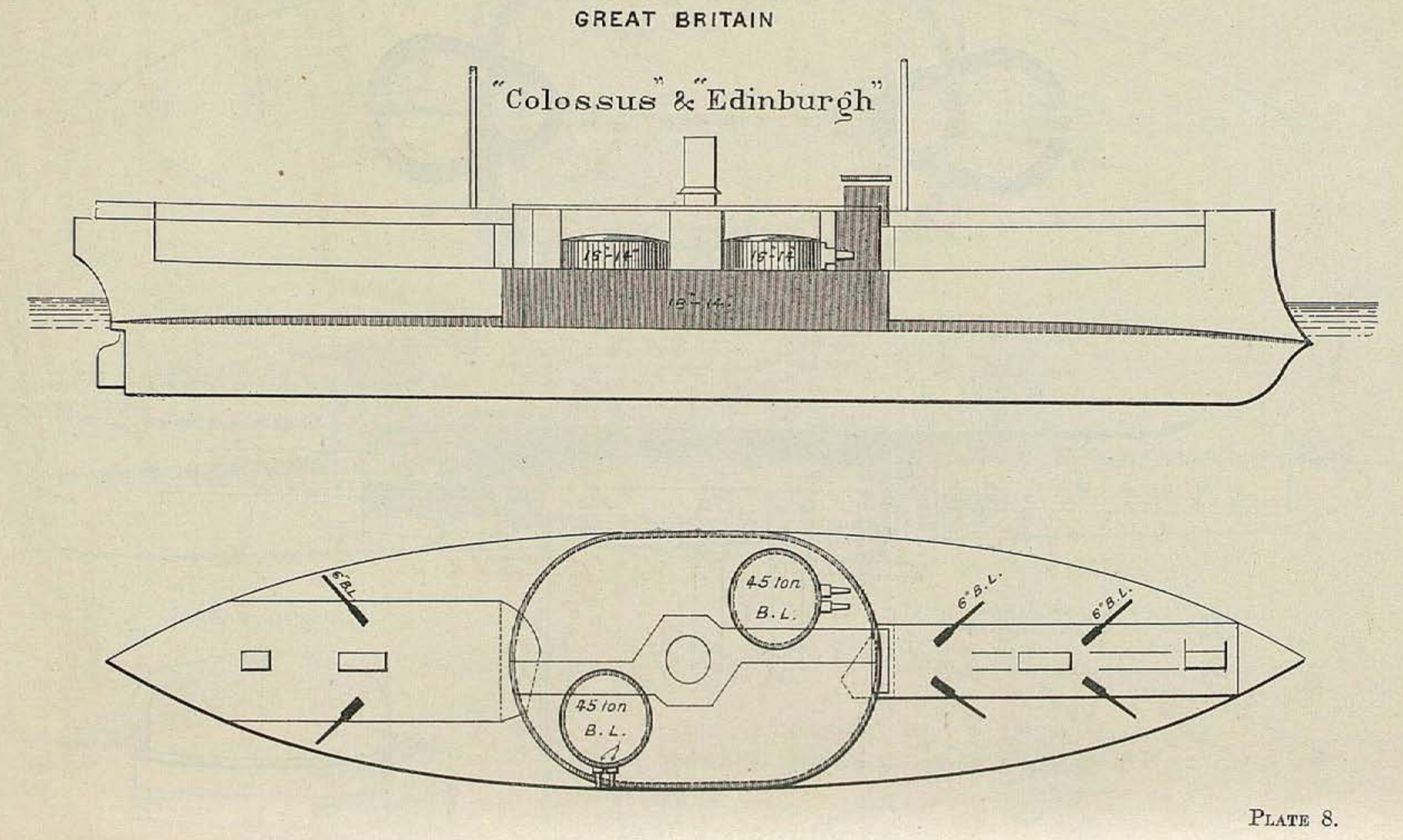|
Jesse Handsley
Jesse Handsley (29 March 1876 – 3 June 1916) was an Able seaman (rank), able seaman who served under Captain Robert Falcon Scott on the Discovery Expedition, ''Discovery'' expedition of 1901 to 1904. Handsley joined the Royal Navy on 24 December 1901 aged 15. Whilst serving on HMS Ringarooma, HMS ''Ringarooma'' at Port Chalmers, New Zealand, he joined the British National Antarctic Expedition. During the expedition, he was chosen by Scott as a member of an elite support party for Scott's Southern trip. Handsley served for the full duration of the expedition, but the ship was trapped in ice for most of that time. He undertook several sledging trips whilst on the journey, spending a total of 153 days man-hauling sledges.Record of Medals RGS AA/3/1/22. Pg 24 Early life Family Born in Skegness, Lincolnshire to a long-established Lincolnshire family, he lived in Winthorpe, Lincolnshire, Winthorpe and Wainfleet All Saints, Wainfleet, Lincolnshire. In 1891 he became a baker boy, ... [...More Info...] [...Related Items...] OR: [Wikipedia] [Google] [Baidu] |
Skegness, Lincolnshire
Skegness ( ) is a Seaside resort, seaside town and civil parishes in England, civil parish in the East Lindsey, East Lindsey District of Lincolnshire, England. On the Lincolnshire coast of the North Sea, the town is east of Lincoln, England, Lincoln and north-east of Boston, Lincolnshire, Boston. With a population of 19,579 as of 2011, it is the largest settlement in East Lindsey. It also incorporates Winthorpe, Lincolnshire, Winthorpe and Seacroft, Lincolnshire, Seacroft, and forms a larger Urban area, built-up area with the resorts of Ingoldmells and Chapel St Leonards to the north. The town is on the A52 road, A52 and A158 road, A158 roads, connecting it with Boston and the East Midlands, and Lincoln respectively. Skegness railway station is on the Poacher Line, Nottingham to Skegness (via Grantham) line. The original Skegness was situated farther east at the mouth of The Wash. Its Old Norse, Norse name refers to a headland which sat near the settlement. By the 14th century ... [...More Info...] [...Related Items...] OR: [Wikipedia] [Google] [Baidu] |
Winthorpe, Lincolnshire
Winthorpe is a small coastal village in the East Lindsey district of Lincolnshire, England. It is situated approximately north from Skegness . Winthorpe was both an ancient parish, and a civil parish, until 1926 when it was abolished. A small part of it enlarged Addlethorpe parish, and the larger part of it enlarged Skegness parish. The manor belonged to Lord Monson. The church is dedicated to Saint Mary and is a Grade I listed building dating from the 13th century, although most of it is 15th-century. Today St Marys forms part of the Skegness Group of Churches, which also includes: St Matthews, Skegness; St Clement, Skegness; St Peter and St Paul, Ingoldmells Ingoldmells ( ) is a coastal village, civil parish and resort in the East Lindsey district of Lincolnshire, England. It is situated on the A52, and north from the resort town of Skegness. Most housing is found in the west of the village in ...; and St Nicholas, Addlethorpe. References External links * ... [...More Info...] [...Related Items...] OR: [Wikipedia] [Google] [Baidu] |
RRS Discovery
The RRS ''Discovery'' is a barque-rigged auxiliary steamship built in Dundee, Scotland for Antarctic research. Launched in 1901, she was the last traditional wooden three-masted ship to be built in the United Kingdom. Her first mission was the British National Antarctic Expedition, carrying Robert Falcon Scott and Ernest Shackleton on their first, and highly successful, journey to the Antarctic, known as the ''Discovery'' Expedition. After service as a merchant ship before and during the First World War, ''Discovery'' was taken into the service of the British government in 1923 to carry out scientific research in the Southern Ocean, becoming the first Royal Research Ship. The ship undertook a two-year expedition – the Discovery Investigations – recording valuable information on the oceans, marine life and being the first scientific investigation into whale populations. From 1929 to 1931 ''Discovery'' served as the base for the British Australian and New Zealand Antarctic ... [...More Info...] [...Related Items...] OR: [Wikipedia] [Google] [Baidu] |
HMS Royal Oak (1892)
HMS ''Royal Oak'' was one of seven pre-dreadnought battleships built for the Royal Navy during the 1890s. Upon her completion in 1894, she was initially placed in reserve until mobilised in 1896 for service with the Flying Squadron. After returning briefly to reserve, the ship was assigned the following year to the Mediterranean Fleet. ''Royal Oak'' remained there until 1902 when she returned home; after a refit, the ship was assigned to the Home Fleet, where she served as the flagship of the fleet's second-in-command in 1904–05. ''Royal Oak'' was then reduced to reserve until she was taken out of service in 1911. The ship was sold for scrap in early 1914. Design and description The design of the ''Royal Sovereign''-class ships was derived from that of the battleships, greatly enlarged to improve seakeeping and to provide space for a secondary armament as in the preceding battleships. The ships displaced at normal load and at deep load. They had a length between per ... [...More Info...] [...Related Items...] OR: [Wikipedia] [Google] [Baidu] |
HMS Collingwood (1882)
HMS ''Collingwood'' was the lead ship of her class of ironclad battleships built for the Royal Navy during the 1880s. The ship's essential design became the standard for most of the following British battleships. Completed in 1887, she spent the next two years in reserve before she was assigned to the Mediterranean Fleet for the next eight years. After returning home in 1897, the ship spent the next six years as a guardship in Ireland. ''Collingwood'' was not significantly damaged during an accidental collision in 1899 and was paid off four years later. The ship was sold for scrap in 1909 and subsequently broken up. Background and design At the time of her design, she was not considered as being the forerunner of any class; she was designed by the Director of Naval Construction, Sir Nathaniel Barnaby, as a one-off as an answer to the French s, which carried three heavy guns on the centreline and a number of smaller pieces on the broadside. He made several proposals to the ... [...More Info...] [...Related Items...] OR: [Wikipedia] [Google] [Baidu] |
Sheerness
Sheerness () is a town and civil parish beside the mouth of the River Medway on the north-west corner of the Isle of Sheppey in north Kent, England. With a population of 11,938, it is the second largest town on the island after the nearby town of Minster which has a population of 21,319. Sheerness began as a fort built in the 16th century to protect the River Medway from naval invasion. In 1665 plans were first laid by the Navy Board for Sheerness Dockyard, a facility where warships might be provisioned and repaired. The site was favoured by Samuel Pepys, then Clerk of the Acts of the navy, for shipbuilding over Chatham inland. After the raid on the Medway in 1667, the older fortification was strengthened; in 1669 a Royal Navy dockyard was established in the town, where warships were stocked and repaired until its closure in 1960. Beginning with the construction of a pier and a promenade in the 19th century, Sheerness acquired the added attractions of a seaside resort. ... [...More Info...] [...Related Items...] OR: [Wikipedia] [Google] [Baidu] |
HMS Galatea (1887)
HMS ''Galatea'' was one of seven armoured cruisers built for the Royal Navy in the mid-1880s. She was sold for scrap on 5 April 1905. Design and description ''Galatea'' had a length between perpendiculars of , a beam of and a draught of . Designed to displace , all of the ''Orlando''-class ships proved to be overweight and displaced approximately . The ship was powered by a pair of three-cylinder triple-expansion steam engines, each driving one shaft, which were designed to produce a total of and a maximum speed of using steam provided by four boilers with forced draught. The ship carried a maximum of of coal which was designed to give her a range of at a speed of . The ship's complement was 484 officers and ratings.Chesneau & Kolesnik, p. 65 ''Galatea''s main armament consisted of two breech-loading (BL) Mk V guns, one gun fore and aft of the superstructure on pivot mounts. Her secondary armament was ten BL guns, five on each broadside. Protection against to ... [...More Info...] [...Related Items...] OR: [Wikipedia] [Google] [Baidu] |
HMS Edinburgh (1882)
HMS ''Edinburgh'' was an ironclad battleship of the ''Colossus'' class which served in the Royal Navy of the Victorian era. She was the sister ship of HMS ''Colossus'', being started before her but being completed after. ''Edinburgh'' was the first British battleship since HMS ''Warrior'', launched in 1860, to carry breech-loading artillery as part of her main armament. ''Warrior'' had been equipped with 10 110-pounder Armstrong breech-loading guns, which had not proved satisfactory, to complement her 26 muzzle-loaders. ''Edinburgh''s guns were carried in two turrets positioned near the centre of the ship, and the turrets were mounted ''en echelon''. It was expected that, by mounting the turrets in this way, at least one gun from each turret could fire fore and aft along the keel line, and all four guns could fire on broadside bearings; it was intended that every part of the horizon could be covered by at least two guns. In practice it was found that firing too close to ... [...More Info...] [...Related Items...] OR: [Wikipedia] [Google] [Baidu] |
HMS Ruby
Nine ships of the Royal Navy have borne the name HMS ''Ruby'': * was initially a 40-gun warship launched in 1652. She fought in the War of the Spanish Succession as part of a fleet under Admiral John Benbow. She was rebuilt in 1706 carrying between 46 and 54 guns.Lavery, SoLv1 p. 167 and captured in 1707 by the French ship ''Mars''. * was a 66-gun third-rate ship of the line, originally the French ship ''Rubis''. She was captured in 1666, hulked after sustaining storm damage in 1682 and broken up in 1685. * was a 54-gun fourth-rate ship of the line launched in 1708. She was renamed HMS ''Mermaid'' in 1744 and was sold in 1748. * was a 50-gun third-rate ship of the line launched in 1745 and broken up in 1765. * HMS ''Rubis'' (1747), , a 52-gun ship of the line, captured in 1747 and taken into service as HMS ''Rubis'' and condemned in 1748. * was a 64-gun third-rate ship of the line launched in 1776 that served at Bermuda between 1811 and her breaking up in 1821. * was an iro ... [...More Info...] [...Related Items...] OR: [Wikipedia] [Google] [Baidu] |
Royal Naval Barracks, Chatham
The Royal Naval Barracks, Chatham, also known as HMS ''Pembroke'', was a UK naval barracks that was built between the Victorian Steam Yard and Brompton Barracks from 1897 to 1902. It was built on the site of a prison built in 1853 to house over 1,000 convicts, with the intention that they would be used to build the Dockyard extension. Background During the Age of Sail, the Royal Navy manned its ships either by recruitment or impressment; crew were retained for as long as they were needed and then usually dismissed when their ship was paid off at the end of a voyage or campaign. The introduction of Long Term Service in 1853, however, prompted the Navy to look at providing more permanent quarters for seamen in home waters. At first, they were almost invariably housed in hulks; it was only towards the end of the century that purpose-built barracks began to be constructed at each of the three principal Royal Navy Dockyards: Chatham, Devonport and Portsmouth. These barracks wer ... [...More Info...] [...Related Items...] OR: [Wikipedia] [Google] [Baidu] |
HMS Mersey (1885)
HMS ''Mersey'' was a second class protected cruiser. They were relatively modern, in that they were the first cruiser A cruiser is a type of warship. Modern cruisers are generally the largest ships in a fleet after aircraft carriers and amphibious assault ships, and can usually perform several roles. The term "cruiser", which has been in use for several hu ...s that had discarded their sailing rigs in the design, that was synonymous with the old wooden warships, and were now solely steam powered warships. She was built at Chatham Dockyard and launched on 31 March 1885, but had a relatively mundane career and was sold for breaking in 1905. Citations References * {{DEFAULTSORT:Mersey (1885 Mersey-class cruisers Ships built in Chatham 1885 ships ... [...More Info...] [...Related Items...] OR: [Wikipedia] [Google] [Baidu] |
HMS Minotaur (1863)
HMS ''Minotaur'' was the lead ship of the armoured frigates built for the Royal Navy during the 1860s. They were the longest single-screw warships ever built. ''Minotaur'' took nearly four years between her launching and commissioning because she was used for evaluations of her armament and different sailing rigs. The ship spent the bulk of her active career as flagship of the Channel Squadron, including during Queen Victoria's Golden Jubilee Fleet Review in 1887. She became a training ship in 1893 and was then hulked in 1905 when she became part of the training school at Harwich. ''Minotaur'' was renamed several times before being sold for scrap in 1922 and broken up the following year. Design and description The ''Minotaur''-class armoured frigatesIronclad is the all-encompassing term for armoured warships of this period. Armoured frigates were basically designed for the same role as traditional wooden frigates, but this later changed as the size and expense of these shi ... [...More Info...] [...Related Items...] OR: [Wikipedia] [Google] [Baidu] |






_deck.jpg)